If you have a sunny spot outdoors, you can probably grow peppers in containers. Whether it’s a balcony or your backyard, all you need is a bright location and a watering can.
Okay, there’s a bit more to it than just that. However, growing peppers in pots is one of the easiest ways to start growing as a beginner. In fact, it’s how we got started with our gardening journey.
One of the most important choices you’ll make is which variety to grow in a container. Some peppers are better suited for growing in pots than others. So, in this article, I’ll share 11 different peppers to grow in containers.
1. Dwarf Peppers

If you don’t have much space, then opting for a dwarf pepper variety could be for you. There are many peppers that never grow more than 8-10″ tall, regardless of their planting location.
So, try peppers like the medusa or fire and ice to grow in small pots. You can also plant these ornamental peppers around the edges of larger planters, or along pathways for a bright pop of color.
The peppers are edible, though some taste better than others. If you are looking for low-heat peppers, the chilly chili is a good dwarf variety.
2. Cayenne Peppers
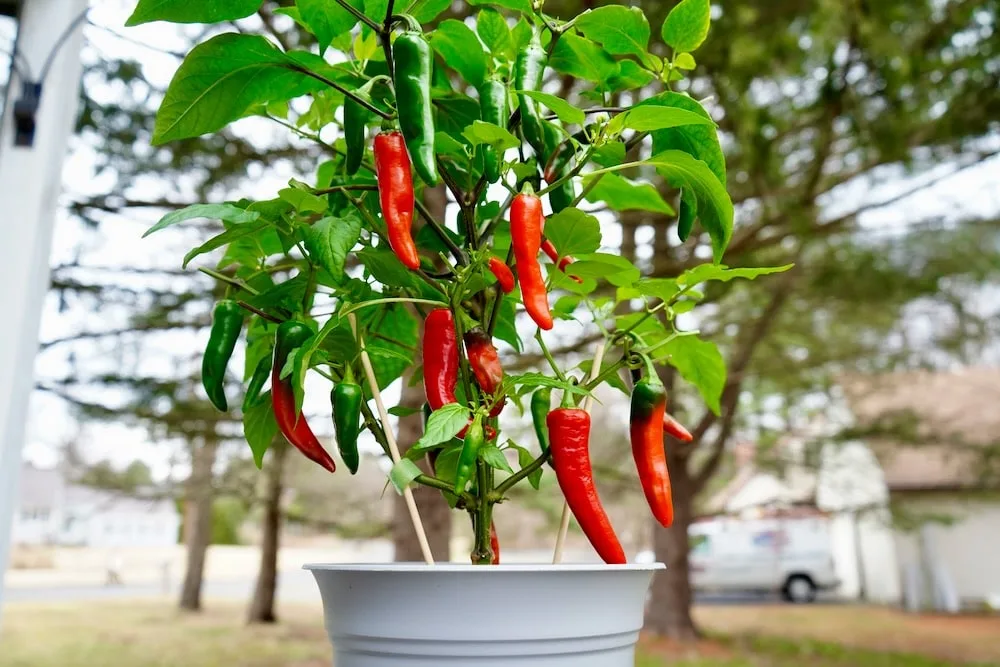
Cayenne peppers make great container plants. The size of the container you choose will impact the overall size of the plant (and harvest), so keep that in mind when picking a pot.
There are many different types of cayenne peppers, from small chilies, to the 12″+ Joe’s long cayenne. However, for container growing, I’d recommend sticking to a cayenne pepper that is on the short side, around 3-5″.
Good container cayennes include the cayenne “red ember” (pictured above), or the “cayennetta.” If you want extra heat, try the “ring of fire” cayenne.
3. Quintisho Peppers
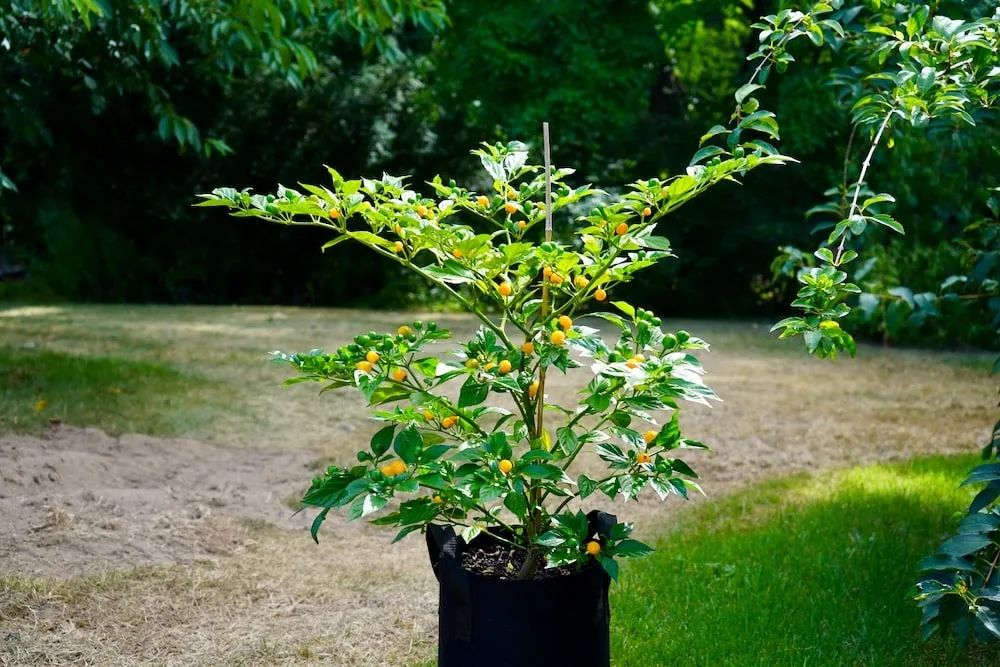
While you may not have heard of the quintisho, it doesn’t mean it isn’t worth growing! This Capsicum chinense variety has an incredible growth pattern, perfect for growing in a container.
The plants are extremely sturdy, producing lots of branches. Later in the season, the plants are loaded with gumball-sized fruits that ripen to a beautiful golden color.
The flavor is also unique, similar to a habanero with a lovely citrus note. However, be ready for the heat, as quintisho peppers are pretty hot, around 20,000 SHUs!
4. Jalapeños

The first pepper plant I ever grew was a jalapeño, and it was in a container. While I was no pro (I think I harvested a total of 2 peppers), it was still fun to grow.
Now, I know that you can easily grow dozens of jalapeños on each plant, even in a relatively small container. Just make sure you choose a productive variety, and give the plants plenty of support and nutrients throughout the season.
Some good container jalapeño varieties include the “early jalapeño” and the “NuMex lemon spice.” These are all great for making delicious jalapeño hot sauce!
Tip: For the best results, plant jalapeños in 3-5 gallon containers or larger.
5. Thai Chilies

If cayenne pepper just isn’t hot enough for your tastes, you can step it up to Thai chilies. These fiery peppers grow on beautiful plants. The fruits grow upright in clusters, and people often say they look like flames pointing straight up!
Thai chilies are great for making homemade powder or hot sauce, and are easy to grow in pots. The smaller plant size is perfect for a balcony garden, and you can get a decent harvest off of 1-2 foot tall plants.
6. Bell Peppers
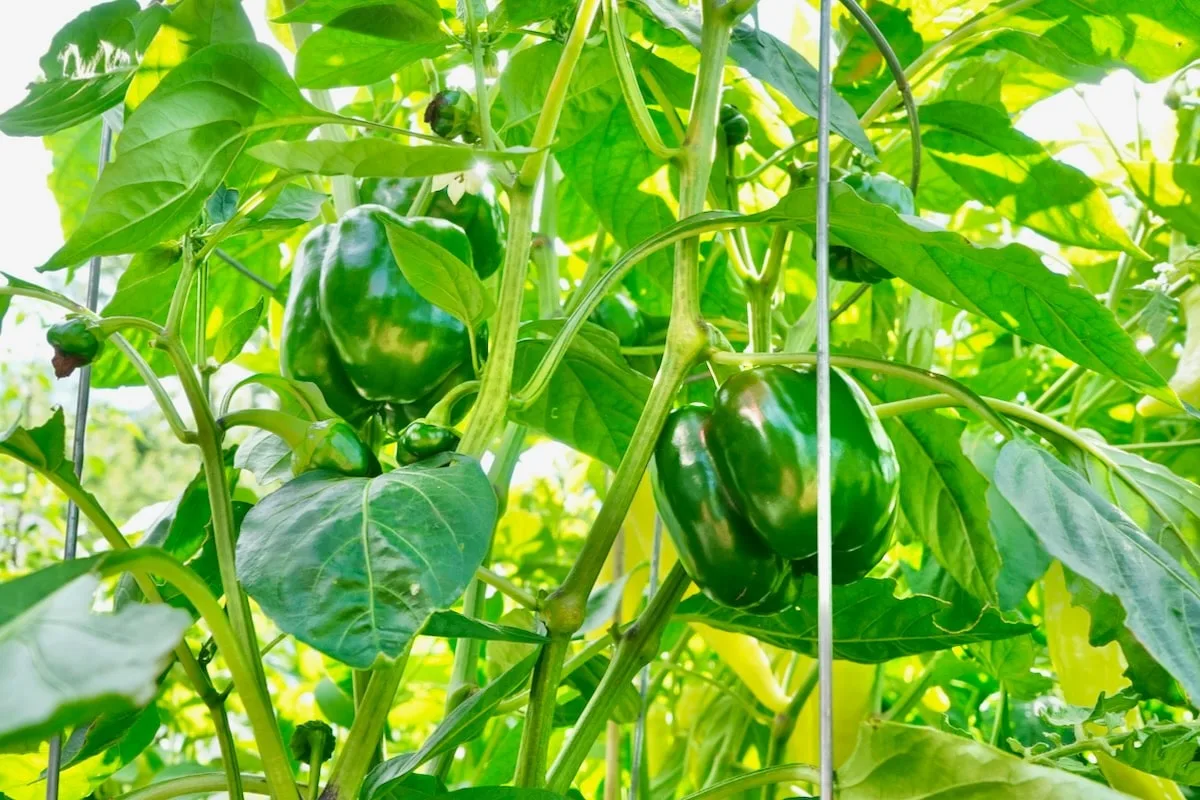
While they may not be my first recommendation to grow in pots, you can definitely grow bell peppers in containers. In fact, every year we grow at least 1 or 2 plants in pots.
The most important thing is to give each plant a large container to grow in. Bell peppers need at least a 5 gallons pot to produce a good harvest, and ideally even larger.
Choose bell varieties that are well-suited for containers like the smaller “Eros” variety, or the majestic sweet bell (pictured above).
7. Ghost Peppers

If you like it super spicy, then you’ll be happy to know that you can grow ghost peppers (and other superhots) in containers. Contrary to popular belief, ghost pepper plants can be enormous, easily producing hundreds of peppers per plant.
So, if you want a large harvest, plant your ghost peppers in the largest container possible. However, you can also keep the plants compact by growing in smaller pots.
Provide the plants with support as they grow larger to avoid broken branches. Keep in mind that ghost peppers and other C. chinense species peppers need a long growing season, often 120 days after transplanting!
8. Rocotos

Rocoto peppers are rare in the United States, and are much more popular in South and Central America. They come from another species (Capsicum pubescens), and have a distinct growth pattern.
They grow well in containers, but keep in mind that the plants don’t like excessive heat. So, it may be best to grow these in partial shade, allowing the plants to cool off during the hot afternoons.
Rocotos are tasty and hot, and have unique traits. The leaves and stems are fuzzy, and the seeds inside are black! We usually shop at semillas la palma for a good selection of rocoto seeds.
9. Habaneros
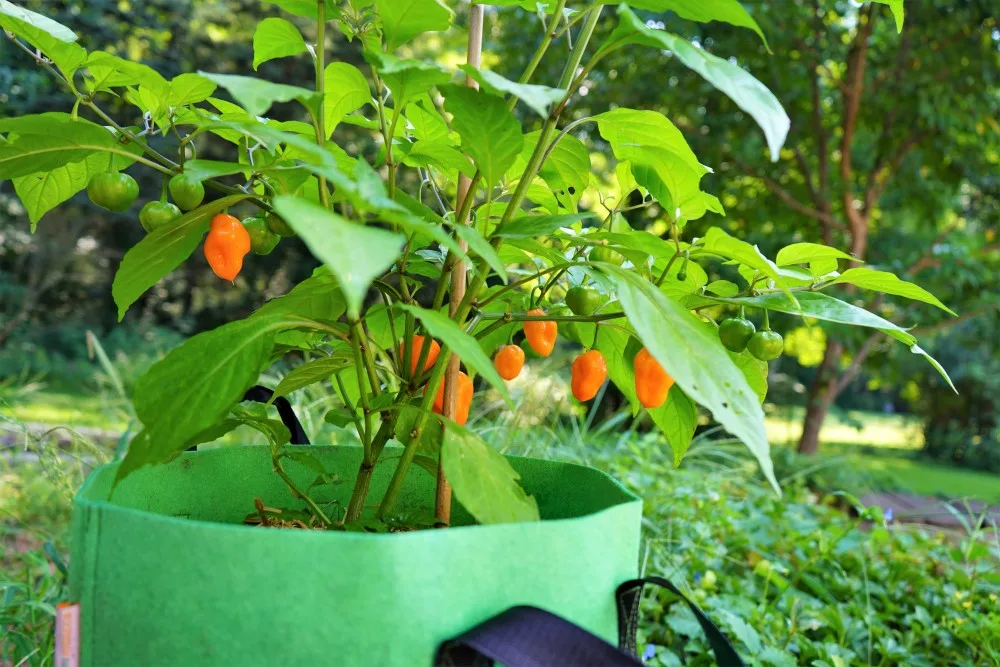
Habanero peppers are a staple in our home for making super spicy salsa and delicious habanero hot sauce. The peppers are surprisingly fruity and flavorful, if you can handle the heat!
Like ghost peppers, habanero plants can grow to be fairly large, so be sure to give them a large enough pot. However, if you’re short on space, keep them in a smaller container to keep the plant size down.
10. Aji Peppers

There are many different types of aji peppers. This is a category of peppers, most of which come from the C. baccatum species.
The peppers taste very different from your standard jalapeño or cayenne, with a fruitier, sweeter profile. They make delicious sauces and pastes, and a totally unique dried powder.
Most aji peppers, such as the aji amarillo, are fairly tall and impressive, often passing 5 feet in height. However, the plants need a very long growing season to ripen up their fruits.
11. Santaka

One of our favorite simple chili peppers is the Japanese santaka variety. These plants can grow to be very large, or kept relatively compact when grown in a smaller container.
If you’re looking for a tasty, spicy culinary chili pepper, you have to try the santaka. The plants are sturdy and produce lots and lots of chilies throughout the season. This is one of the perfect starter peppers (which is why we included a seed packet with our starter kit bundle!)
Using containers makes growing peppers accessible to almost anyone. If you’ve been thinking about trying to grow your own peppers, try any of the varieties mentioned in this article!
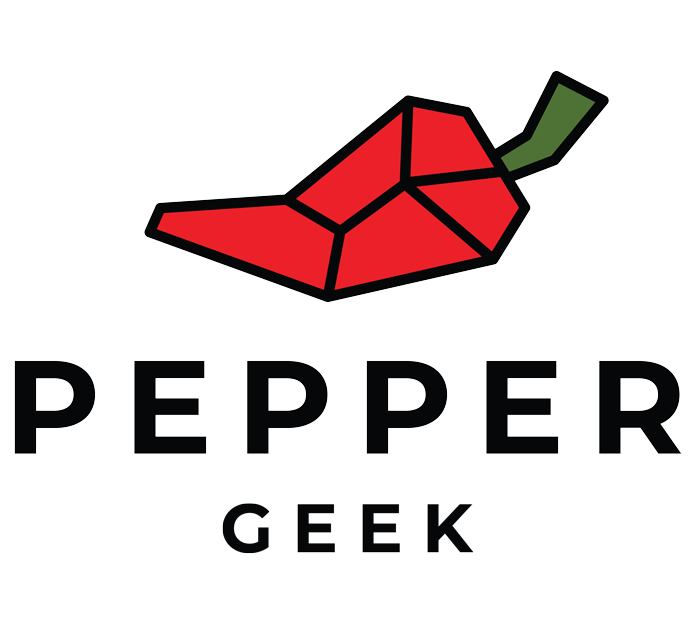

David
Monday 18th of March 2024
Good morning from Indonesia. I have been following your site for several months and am having great success (helped by the fact that there is no growing season here!). I wonder if you can give me some advice on identifying pepper types - things here are labelled differently - I have a healthy bush that may be Tabasco peppers - here they just call them "rawit" - is there any way I can upload a picture for the community to give their thoughts? Thanks in advance
peppergeek
Tuesday 19th of March 2024
Hey thanks! You can try uploading a picture to our subreddit: https://reddit.com/r/peppergeek
Earl Holder
Thursday 15th of February 2024
I had real good luck last year, soooo, here I am. I am working on an order, so it will be awhile. I am in WY, so about March I plant inside. I have grow lights and heat pads and a five shelf inside little "green house "clear plastic cover with zipper in one side to get to my plants.
Dan
Wednesday 14th of February 2024
Hi Calvin. In Canada I’m a zone 4. We only get about 4 months hot weather. Do you think I would be able to plant my peppers in containers. Obviously a greenhouse would be better but…. Thank you love reading your blog
peppergeek
Friday 16th of February 2024
Yes, I would start them early indoors, but you should definitely be able to grow in containers. Look for early varieties for a quicker harvest